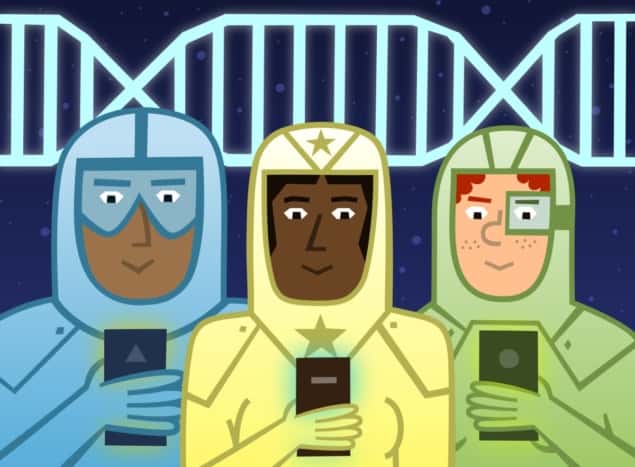
Solving scientific problems by turning them into games is a popular strategy of citizen science projects, which use the brains of the public to do research in areas as diverse as astronomy and genetics.
The latest scientific task to be gamified is the creation of genomic reference maps for cancer cells. These maps allow researchers to pinpoint areas of a cancer-cell genome that could be targeted for therapy or are potential mutation sites.
Marc Marti-Renom and colleagues at the Centre for Genomic Regulation in Barcelona have developed a to create genomic reference maps by visualizing the genome in 3D space. Doing this, however, requires large amounts of time and resources to train artificial intelligence as well as vast amounts of computational power.
Solving puzzles
To allow the public to help, the researchers joined forces with game developers to create GENIGMA, which can be downloaded as an iOS or Android app. Players solve puzzles involving a string of blocks of different colours and shapes. Each string represents a genetic sequence in the cancer cell line, and the way that the user tries to solve the puzzle provides the researchers with a potential solution to the location of genes.
The first genome to be targeted is the T-47D breast cancer cell line, which is widely used in cancer research. The game launched last week for a three-month campaign and Marti-Renom’s team reckon that it will take 30,000 players solving an average of 50 games each to create the reference map of the 20,000 genes in T-47D. They are off to a good start because in the first week of operation, GENIGMA attracted over 10,000 new players.
You may remember in late 2020 when physicist Steven Wooding created an online resource to prove that the Earth is a sphere and not flat. Some of the experiments included how to see a second sunset, how to hide an object behind the curvature of the Earth and how to use shadows to measure the radius of the Earth.
In time for Valentine’s Day
Well, Wooding is back with a new project that is all about finding love. No doubt timed for Valentine’s Day, the Drake Equation for Love Calculator applies the famous Drake equation, which is used to calculate the number of alien civilizations in our galaxy with whom we could communicate, to estimate your chance of finding “the one”. The calculator – created with the help of data scientist Rijk de Wet – considers your location, social skills and attractiveness as well as the age range of potential partners you are looking for and whether they are university educated. It then compares the output to the possibility of an alien civilization existing within 1000 light-years away from Earth.
Wooding told Physics World that his odds of finding love are 2.1 times better than the possibility of alien life. It sounds like he might be being a tad picky.



